#method engineering services
Explore tagged Tumblr posts
Text
Innovative Marine Temporary Works with Expert Structural Engineering Solutions
Explore cutting-edge Marine Temporary Works designed to support complex marine construction projects. Ratio Structural combines advanced Structural Engineering Solutions with precision and innovation to deliver reliable and efficient temporary structures for the marine industry.
#structural engineering solutions#ratio structural#engeenirng#marine temporary works#building design services washington dc#method engineering services#technology#heavy lift design services#ratio structural washington state#design
0 notes
Text
#ndt methods#ndt techniques#seo#search engine optimization#seo services#seo strategy#seo strategies for ndt field
0 notes
Text
TEFUGEN: Redefining Engineering Excellence through Finite Element Analysis

WHY USE FEA IN YOUR ENGINEERING PROJECTS?
At the forefront of engineering excellence, TEFUGEN offers exceptional Finite Element Analysis (FEA) services in India. Utilizing FEA yields unparalleled benefits, offering profound insights into your project's performance prior to physical model construction. It aids in pinpointing stress points, identifying potential weaknesses, and assessing material durability under diverse conditions, effectively mitigating the risk of failure and associated costs. With its ability to conduct precise simulations, FEA empowers informed decision-making in design modifications, guaranteeing optimal performance and safety.
Structural Integrity Assessment:
In engineering, FEA, an indispensable method, meticulously assesses structural integrity by simulating material responses to diverse conditions. This predictive analysis is pivotal for guaranteeing the safety and reliability of designs. TEFUGEN, as a FEA consulting service in India, provides expert assistance, enabling engineers to identify potential weaknesses and optimize for durability.
Thermal stress analysis:
FEA analysis services play a key role in assessing heat distribution within structures or components. Engineers leverage this analysis to model and analyze thermal behavior meticulously. By doing so, they optimize designs for efficient heat dissipation or retention, ensuring the performance and reliability of the system. This detailed analysis enables engineers to make informed decisions regarding material selection, insulation, or heat management strategies, ultimately enhancing overall system efficiency and longevity.
Mechanical Component Design:
FE Analysis plays a crucial role in optimizing mechanical component design by accurately predicting stress, strain, and deformation. This ensures components can effectively withstand operational loads while minimizing material usage, thereby enhancing efficiency and cost-effectiveness.
Fatigue Analysis:
Engineers use FEA for fatigue analysis, predicting the lifespan of components subjected to cyclic loading. This is crucial in industries like aerospace and automotive, where understanding material fatigue is paramount.
Fluid Structure Interaction:
Fluid Structure Interaction (FSI) is a crucial aspect of FE Analysis, examining the dynamic interaction between fluids and structures. By simulating how fluids affect nearby structures and vice versa, FSI enables engineers to optimize designs for enhanced performance and durability across various industries.
Modal analysis Modal analysis using FEA techniques enables the simulation of eigenfrequencies and eigenmodes, revealing the vibrational characteristics of a structure. Meanwhile, harmonic analysis facilitates the emulation of peak responses to specific loads, offering insights into system behavior. These analyses are indispensable tools for understanding structural dynamics and optimizing performance.
Motion study Unlocking insights into structural behavior through Finite Element Analysis (FEA) motion studies. Discover the intricate dynamics of systems, optimize designs, and ensure structural resilience with FEA motion analysis.
#Finite Element Analysis Consulting Services in India#FEA Analysis Services#FEA Consulting Engineers#FEA Consultants in Trichy#FEA#Finite Element Method#Structural Analysis#Stress Analysis#Static Analysis#Dynamic Analysis#Thermal Analysis#Fluid Flow Analysis#Vibration Analysis#Fatigue Analysis#Buckling Analysis#Modal Analysis#Meshing#Boundary Conditions#Material Properties#Convergence#Post-processing#Optimisation#Mesh Generation#Simulation Software
0 notes
Text
Discover various strategies and techniques to enhance your website's SEO through effective link building methods. Explore proven approaches to acquire quality backlinks and improve your website's search engine rankings.
Learn More:
#link building#link building methods#link buiding for seo#digital marketing#digital marketing agency#seo agency#link building strategy#strategy for link building#search engine optimization#best seo services#best seo company in delhi#digitalmarketing#searchengineoptimization#seoservices#digitalmarketingcompany#elysiandigitalservicesindelhi#elysianagency#best digital marketing agency in delhi#digitalmarketingagency
0 notes
Text
All-Star Moments in Space Communications and Navigation
How do we get information from missions exploring the cosmos back to humans on Earth? Our space communications and navigation networks – the Near Space Network and the Deep Space Network – bring back science and exploration data daily.
Here are a few of our favorite moments from 2024.

1. Hip-Hop to Deep Space
The stars above and on Earth aligned as lyrics from the song “The Rain (Supa Dupa Fly)” by hip-hop artist Missy Elliott were beamed to Venus via NASA’s Deep Space Network. Using a 34-meter (112-foot) wide Deep Space Station 13 (DSS-13) radio dish antenna, located at the network’s Goldstone Deep Space Communications Complex in California, the song was sent at 10:05 a.m. PDT on Friday, July 12 and traveled about 158 million miles from Earth to Venus — the artist’s favorite planet. Coincidentally, the DSS-13 that sent the transmission is also nicknamed Venus!

NASA's PACE mission transmitting data to Earth through NASA's Near Space Network.
2. Lemme Upgrade You
Our Near Space Network, which supports communications for space-based missions within 1.2 million miles of Earth, is constantly enhancing its capabilities to support science and exploration missions. Last year, the network implemented DTN (Delay/Disruption Tolerant Networking), which provides robust protection of data traveling from extreme distances. NASA’s PACE (Plankton, Aerosol, Cloud, ocean Ecosystem) mission is the first operational science mission to leverage the network’s DTN capabilities. Since PACE’s launch, over 17 million bundles of data have been transmitted by the satellite and received by the network’s ground station.
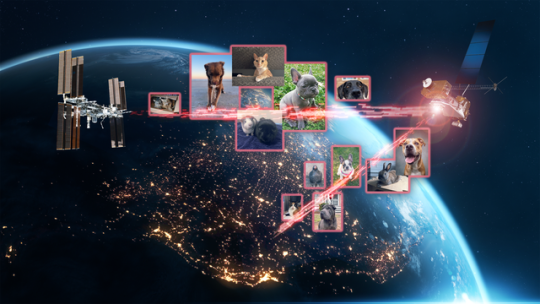
A collage of the pet photos sent over laser links from Earth to LCRD and finally to ILLUMA-T (Integrated LCRD Low Earth Orbit User Modem and Amplifier Terminal) on the International Space Station. Animals submitted include cats, dogs, birds, chickens, cows, snakes, and pigs.
3. Who Doesn’t Love Pets?
Last year, we transmitted hundreds of pet photos and videos to the International Space Station, showcasing how laser communications can send more data at once than traditional methods. Imagery of cherished pets gathered from NASA astronauts and agency employees flowed from the mission ops center to the optical ground stations and then to the in-space Laser Communications Relay Demonstration (LCRD), which relayed the signal to a payload on the space station. This activity demonstrated how laser communications and high-rate DTN can benefit human spaceflight missions.

4K video footage was routed from the PC-12 aircraft to an optical ground station in Cleveland. From there, it was sent over an Earth-based network to NASA’s White Sands Test Facility in Las Cruces, New Mexico. The signals were then sent to NASA’s Laser Communications Relay Demonstration spacecraft and relayed to the ILLUMA-T payload on the International Space Station.
4. Now Streaming
A team of engineers transmitted 4K video footage from an aircraft to the International Space Station and back using laser communication signals. Historically, we have relied on radio waves to send information to and from space. Laser communications use infrared light to transmit 10 to 100 times more data than radio frequency systems. The flight tests were part of an agency initiative to stream high-bandwidth video and other data from deep space, enabling future human missions beyond low-Earth orbit.

The Near Space Network provides missions within 1.2 million miles of Earth with communications and navigation services.
5. New Year, New Relationships
At the very end of 2024, the Near Space Network announced multiple contract awards to enhance the network’s services portfolio. The network, which uses a blend of government and commercial assets to get data to and from spacecraft, will be able to support more missions observing our Earth and exploring the cosmos. These commercial assets, alongside the existing network, will also play a critical role in our Artemis campaign, which calls for long-term exploration of the Moon.

On Monday, Oct. 14, 2024, at 12:06 p.m. EDT, a SpaceX Falcon Heavy rocket carrying NASA’s Europa Clipper spacecraft lifts off from Launch Complex 39A at NASA’s Kennedy Space Center in Florida.
6. 3, 2, 1, Blast Off!
Together, the Near Space Network and the Deep Space Network supported the launch of Europa Clipper. The Near Space Network provided communications and navigation services to SpaceX’s Falcon Heavy rocket, which launched this Jupiter-bound mission into space! After vehicle separation, the Deep Space Network acquired Europa Clipper’s signal and began full mission support. This is another example of how these networks work together seamlessly to ensure critical mission success.

Engineer Adam Gannon works on the development of Cognitive Engine-1 in the Cognitive Communications Lab at NASA’s Glenn Research Center.
7. Make Way for Next-Gen Tech
Our Technology Education Satellite program organizes collaborative missions that pair university students with researchers to evaluate how new technologies work on small satellites, also known as CubeSats. In 2024, cognitive communications technology, designed to enable autonomous space communications systems, was successfully tested in space on the Technology Educational Satellite 11 mission. Autonomous systems use technology reactive to their environment to implement updates during a spaceflight mission without needing human interaction post-launch.

A first: All six radio frequency antennas at the Madrid Deep Space Communication Complex, part of NASA’s Deep Space Network (DSN), carried out a test to receive data from the agency’s Voyager 1 spacecraft at the same time.
8. Six Are Better Than One
On April 20, 2024, all six radio frequency antennas at the Madrid Deep Space Communication Complex, part of our Deep Space Network, carried out a test to receive data from the agency’s Voyager 1 spacecraft at the same time. Combining the antennas’ receiving power, or arraying, lets the network collect the very faint signals from faraway spacecraft.
Here’s to another year connecting Earth and space.
Make sure to follow us on Tumblr for your regular dose of space!
1K notes
·
View notes
Text
The child sextortion group 764 and the global collective of loosely associated groups known as “The Com” are using tools and techniques normally used for financially motivated cybercrime tactics — such as SIM swapping, IP grabbing and social engineering — to commit violent crimes, according to exclusive law enforcement and intelligence reports reviewed by CyberScoop. The reports offer insight into the underbelly of the global network, showing how they are using traditional cybercriminal tools to identify, target, groom, extort, and cause physical and psychological harm to victims as young as 10. They were shared with police nationwide and in some cases, with foreign-allied governments. [...] The group “appears to be situated at the nexus of communities of users who share gore material, [Racially or Ethnically Motivated Violent Extremist-White Supremacist] adherents such as M.K.U. and child exploitation actors like 764.” M.K.U., it says, is a neo-Nazi group with a presence in Russia and Ukraine. [...] The groups use methods to trick children into sending sexually explicit photos of themselves, threaten to make the photos public unless they harm themselves, and kill or harm animals, among other crimes. The group’s members have coerced children into attempting suicide, harming themselves, siblings and animals. (x)
///
Wired reported this week that a 19-year-old working for Elon Musk‘s so-called Department of Government Efficiency (DOGE) was given access to sensitive US government systems even though his past association with cybercrime communities should have precluded him from gaining the necessary security clearances to do so. As today’s story explores, the DOGE teen is a former denizen of ‘The Com,’ an archipelago of Discord and Telegram chat channels that function as a kind of distributed cybercriminal social network for facilitating instant collaboration. [...] Internet routing records show that Coristine runs an Internet service provider called Packetware (AS400495). Also known as “DiamondCDN,” Packetware currently hosts tesla[.]sexy and diamondcdn[.]com, among other domains. DiamondCDN was advertised and claimed by someone who used the nickname “Rivage” on several Com-based Discord channels over the years. A review of chat logs from some of those channels show other members frequently referred to Rivage as “Edward.” From late 2020 to late 2024, Rivage’s conversations would show up in multiple Com chat servers that are closely monitored by security companies. In November 2022, Rivage could be seen requesting recommendations for a reliable and powerful DDoS-for-hire service. Rivage made that request in the cybercrime channel “Dstat,” a core Com hub where users could buy and sell attack services. Dstat’s website dstat[.]cc was seized in 2024 as part of “Operation PowerOFF,” an international law enforcement action against DDoS services. (x)
DOGE teen is a pedophile cybercriminal involved in a neonazi CSA-producing cybergang. and he has access to your SSN.
680 notes
·
View notes
Text
How lock-in hurts design

Berliners: Otherland has added a second date (Jan 28) for my book-talk after the first one sold out - book now!

If you've ever read about design, you've probably encountered the idea of "paving the desire path." A "desire path" is an erosion path created by people departing from the official walkway and taking their own route. The story goes that smart campus planners don't fight the desire paths laid down by students; they pave them, formalizing the route that their constituents have voted for with their feet.
Desire paths aren't always great (Wikipedia notes that "desire paths sometimes cut through sensitive habitats and exclusion zones, threatening wildlife and park security"), but in the context of design, a desire path is a way that users communicate with designers, creating a feedback loop between those two groups. The designers make a product, the users use it in ways that surprise the designer, and the designer integrates all that into a new revision of the product.
This method is widely heralded as a means of "co-innovating" between users and companies. Designers who practice the method are lauded for their humility, their willingness to learn from their users. Tech history is strewn with examples of successful paved desire-paths.
Take John Deere. While today the company is notorious for its war on its customers (via its opposition to right to repair), Deere was once a leader in co-innovation, dispatching roving field engineers to visit farms and learn how farmers had modified their tractors. The best of these modifications would then be worked into the next round of tractor designs, in a virtuous cycle:
https://securityledger.com/2019/03/opinion-my-grandfathers-john-deere-would-support-our-right-to-repair/
But this pattern is even more pronounced in the digital world, because it's much easier to update a digital service than it is to update all the tractors in the field, especially if that service is cloud-based, meaning you can modify the back-end everyone is instantly updated. The most celebrated example of this co-creation is Twitter, whose users created a host of its core features.
Retweets, for example, were a user creation. Users who saw something they liked on the service would type "RT" and paste the text and the link into a new tweet composition window. Same for quote-tweets: users copied the URL for a tweet and pasted it in below their own commentary. Twitter designers observed this user innovation and formalized it, turning it into part of Twitter's core feature-set.
Companies are obsessed with discovering digital desire paths. They pay fortunes for analytics software to produce maps of how their users interact with their services, run focus groups, even embed sneaky screen-recording software into their web-pages:
https://www.wired.com/story/the-dark-side-of-replay-sessions-that-record-your-every-move-online/
This relentless surveillance of users is pursued in the name of making things better for them: let us spy on you and we'll figure out where your pain-points and friction are coming from, and remove those. We all win!
But this impulse is a world apart from the humility and respect implied by co-innovation. The constant, nonconsensual observation of users has more to do with controlling users than learning from them.
That is, after all, the ethos of modern technology: the more control a company can exert over its users ,the more value it can transfer from those users to its shareholders. That's the key to enshittification, the ubiquitous platform decay that has degraded virtually all the technology we use, making it worse every day:
https://pluralistic.net/2023/02/19/twiddler/
When you are seeking to control users, the desire paths they create are all too frequently a means to wrestling control back from you. Take advertising: every time a service makes its ads more obnoxious and invasive, it creates an incentive for its users to search for "how do I install an ad-blocker":
https://www.eff.org/deeplinks/2019/07/adblocking-how-about-nah
More than half of all web-users have installed ad-blockers. It's the largest consumer boycott in human history:
https://doc.searls.com/2023/11/11/how-is-the-worlds-biggest-boycott-doing/
But zero app users have installed ad-blockers, because reverse-engineering an app requires that you bypass its encryption, triggering liability under Section 1201 of the Digital Millennium Copyright Act. This law provides for a $500,000 fine and a 5-year prison sentence for "circumvention" of access controls:
https://pluralistic.net/2024/01/12/youre-holding-it-wrong/#if-dishwashers-were-iphones
Beyond that, modifying an app creates liability under copyright, trademark, patent, trade secrets, noncompete, nondisclosure and so on. It's what Jay Freeman calls "felony contempt of business model":
https://locusmag.com/2020/09/cory-doctorow-ip/
This is why services are so horny to drive you to install their app rather using their websites: they are trying to get you to do something that, given your druthers, you would prefer not to do. They want to force you to exit through the gift shop, you want to carve a desire path straight to the parking lot. Apps let them mobilize the law to literally criminalize those desire paths.
An app is just a web-page wrapped in enough IP to make it a felony to block ads in it (or do anything else that wrestles value back from a company). Apps are web-pages where everything not forbidden is mandatory.
Seen in this light, an app is a way to wage war on desire paths, to abandon the cooperative model for co-innovation in favor of the adversarial model of user control and extraction.
Corporate apologists like to claim that the proliferation of apps proves that users like them. Neoliberal economists love the idea that business as usual represents a "revealed preference." This is an intellectually unserious tautology: "you do this, so you must like it":
https://boingboing.net/2024/01/22/hp-ceo-says-customers-are-a-bad-investment-unless-they-can-be-made-to-buy-companys-drm-ink-cartridges.html
Calling an action where no alternatives are permissible a "preference" or a "choice" is a cheap trick – especially when considered against the "preferences" that reveal themselves when a real choice is possible. Take commercial surveillance: when Apple gave Ios users a choice about being spied on – a one-click opt of of app-based surveillance – 96% of users choice no spying:
https://arstechnica.com/gadgets/2021/05/96-of-us-users-opt-out-of-app-tracking-in-ios-14-5-analytics-find/
But then Apple started spying on those very same users that had opted out of spying by Facebook and other Apple competitors:
https://pluralistic.net/2022/11/14/luxury-surveillance/#liar-liar
Neoclassical economists aren't just obsessed with revealed preferences – they also love to bandy about the idea of "moral hazard": economic arrangements that tempt people to be dishonest. This is typically applied to the public ("consumers" in the contemptuous parlance of econospeak). But apps are pure moral hazard – for corporations. The ability to prohibit desire paths – and literally imprison rivals who help your users thwart those prohibitions – is too tempting for companies to resist.
The fact that the majority of web users block ads reveals a strong preference for not being spied on ("users just want relevant ads" is such an obvious lie that doesn't merit any serious discussion):
https://www.iccl.ie/news/82-of-the-irish-public-wants-big-techs-toxic-algorithms-switched-off/
Giant companies attained their scale by learning from their users, not by thwarting them. The person using technology always knows something about what they need to do and how they want to do it that the designers can never anticipate. This is especially true of people who are unlike those designers – people who live on the other side of the world, or the other side of the economic divide, or whose bodies don't work the way that the designers' bodies do:
https://pluralistic.net/2022/10/20/benevolent-dictators/#felony-contempt-of-business-model
Apps – and other technologies that are locked down so their users can be locked in – are the height of technological arrogance. They embody a belief that users are to be told, not heard. If a user wants to do something that the designer didn't anticipate, that's the user's fault:
https://www.wired.com/2010/06/iphone-4-holding-it-wrong/
Corporate enthusiasm for prohibiting you from reconfiguring the tools you use to suit your needs is a declaration of the end of history. "Sure," John Deere execs say, "we once learned from farmers by observing how they modified their tractors. But today's farmers are so much stupider and we are so much smarter that we have nothing to learn from them anymore."
Spying on your users to control them is a poor substitute asking your users their permission to learn from them. Without technological self-determination, preferences can't be revealed. Without the right to seize the means of computation, the desire paths never emerge, leaving designers in the dark about what users really want.
Our policymakers swear loyalty to "innovation" but when corporations ask for the right to decide who can innovate and how, they fall all over themselves to create laws that let companies punish users for the crime of contempt of business-model.
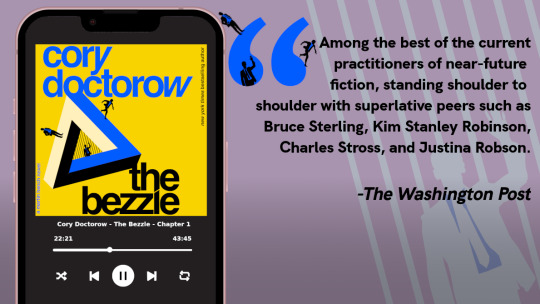
I'm Kickstarting the audiobook for The Bezzle, the sequel to Red Team Blues, narrated by @wilwheaton! You can pre-order the audiobook and ebook, DRM free, as well as the hardcover, signed or unsigned. There's also bundles with Red Team Blues in ebook, audio or paperback.

If you'd like an essay-formatted version of this post to read or share, here's a link to it on pluralistic.net, my surveillance-free, ad-free, tracker-free blog:
https://pluralistic.net/2024/01/24/everything-not-mandatory/#is-prohibited

Image: Belem (modified) https://commons.wikimedia.org/wiki/File:Desire_path_%2819811581366%29.jpg
CC BY 2.0 https://creativecommons.org/licenses/by/2.0/deed.en
#pluralistic#desire paths#design#drm#everything not mandatory is prohibited#apps#ip#innovation#user innovation#technological self-determination#john deere#twitter#felony contempt of business model
3K notes
·
View notes
Text
"High along the peaks and ridges of the mountains in Ecuador, a 25-year-long conservation program is bearing succulent fruit in the form of cleaner water and abundant wildlife.
Established in the year 2000, Quito’s fund for the protection of water has allowed a critical South American ecosystem unique to the world and vital to both plants and animals to reclaim vast tracts of its former landscape, and people are noticing the difference.
“Before the water fund, the páramo in Antisana was very degraded. The only thing you would see was sheep.” Silvia Benitez, the Nature Conservancy’s Director of Freshwater for Latin America, said in a statement. “The change has been amazing. Vegetation is back. The wetlands are restored.”
“Now people see groups of deer. They see puma. I saw a fox. I had never before seen a fox in this area.”
The story of this quarter-century success began when the United States nonprofit the Nature Conservancy partnered with Quito’s water utility company, known as EPMAPS. The second-highest capital city on Earth by altitude, Quito is surrounded by a famous ecosystem called the páramo, a biodiversity hotspot where masses of mosses, lichen, high-altitude palms, and endemic grasses create a mountain environment unlike any other.
The páramo covers slopes above 10,000 feet in elevation all over the Andes Mountains, and acts like a giant sponge absorbing and condensing moisture from the lower ground before releasing it in streams and rivers further down. The Nature Conservancy estimates that in Colombia, where páramos cover just 2% of land area, this hydrological service provides 70% of all municipal water. It’s estimated that páramo sequesters 6 times more carbon than tropical rainforest.
EPMAPS and the Nature Conservancy organized $21,000 in seed money to kick-start a trust fund that would charge downstream users of water from the páramos around Quito for the conservation measures needed to protect them.
Called the Fund for the Protection of Water, or FONAG, it’s accumulated $2.5 million in annual contributions over the last 25 years, and as a result, páramos are retaking ranchland that once displaced them, and the wildlife like whitetail deer, Andean bears, Mountain tapirs, and condors are returning as well.
“Since FONAG’s beginning, its priority has always been the protection of the water sources. But when you conserve water sources, it’s almost automatic that you have other co-benefits—biodiversity, carbon sequestration, and social benefits,” said Bert de Bievre, Technical Secretary of FONAG.
Local communities have become very involved in FONAG’s work. Two dozen have become páramo rangers, local ranchers have moved their animals to lower elevations, agriculturalists have worked with EPMAPS to switch to low-impact methods of cultivation away from watersheds, and the Nature Conservancy runs a nursery that grows many of the endemic páramo plants for use in reforestation.
The Quito-FONAG model is now being implemented across the northwestern areas of South America, and it shows how much can be achieved by simply letting rivers run free.
“Each year, the global water sector spends $700 billion on building and repairing pipes and reservoirs, using grey solutions to engineer themselves out of a problem created by deforestation, agriculture or other threats upstream,” said Brooke Atwell, Associate Director of the Nature Conservancy’s Resilient Watersheds strategy.
“If we were able to reallocate just 1% of that spending ($7 billion) toward protecting nature, it would eclipse all global philanthropic spending on conservation today.”"
-via Good News Network, April 1, 2025
#ecuador#south america#quito#quitoecuador#rivers#ecosystem#ecosystem restoration#water#biodiversity#endangered species#water conservation#good news#hope
696 notes
·
View notes
Note
Did you ever work in customer service? You give off been-in-the-trenches-and-are-better-for-it vibes.
Hi, this is slightly unhinged, but thank you!!
Now you're going to get the story of how I was offered a job on the spot for the first ever position I ever interviewed for (which was, indeed, customer service).
Okay, so, I'm 15, my birthday is in two days, and HEB (Texas grocery store) is hiring baggers for $7 an hour and cashiers for a whole whopping $10 an hour. Cashiers have to have prior experience OR have to work as a bagger for a year first. But I am full of teenage verve and I want that cashier position. I want it now.
I show up on my motorcycle, so I'm in my "professional" outfit but carrying my helmet when I enter the hiring manager's office, which really sets the tone for how things proceed.
The interviewer is like, "how old are you?" and babyface mcgee me, five foot tall and all of 90lbs says, "Fifteen. But I'm sixteen in two days."
And he's like, "...we can't hire you if you're fifteen."
And I'm like, "bet, but you can get the paperwork started now, yeah?"
And he says, "wait, how did you drive a motorcycle here if you're 15?"
So the first 5 minutes of the interview turn into me showing him my license, explaining DMV rules re 15-yr-olds and permitted engine size for motorcycles and pointing out my bike in the parking lot.
"Okay," he says, clearly trying to rally. "So you have a method of transportation, that's great, but we can't consider you for the cashier job if you don't have experience. We can only consider you as a bagger."
I'm prepared for this. I lay out my most recent report card, as well as copies of the sports and academic awards I've achieved in the last year. I give my "I'm a fast learner, I'm a hard worker, and you'll benefit more from me working as a cashier, interacting with customers, than a bagger" speech. I've been buying groceries at this store my whole life, so I know that cashiers are ranked by how many 'Item of the Week' they manage to hawk at checkout (typically batteries or soda or chips). "I'll be top of the ranking for Item of the week, just you wait."
I think he is reluctantly charmed by my bull-headedness. "Okay,” he says, reaching for the can of coke on his desk. "Fine. Sell this to me, then. Right now."
This man is mid-forties. He has bad handmade artwork hung up on his office wall.
"Do you have kids?" I ask, already knowing the answer.
"Two," he says. "Boy and a girl. The girl is just a year younger than you, actually."
"Ah," I say, "is it getting harder and harder to connect with her? Monosyllabic answers? Spends all her time in her room."
"...yes," he says.
“I was the same,” I say somberly. “Until, one afternoon, my dad came into my room and handed me a Coke.”
I tap my fingers on the Coke in front of me.
“He told me to come share a drink with him while he grilled on the back porch and that once I’d finished my Coke I could crawl, hissing, back to my room, but he wanted company until then. And see, I did, actually, want to spend time with my dad. I just didn’t know how to initiate it, and my teenage hormones made it difficult for me to express that. So I took the Coke and stomped my way outside but once I was there, I drank it slowly. And I answered his questions about school and cheerleading and asked him about work and we planned a weekend father-daughter motorcycle trip into the hill country. And ever since then, every few days, he’ll come to my room and offer me a Coke, and I’ll spend half an hour drinking it in his company.”
I slide the coke across the desk to him. “Might be an approach to try with your daughter, what do you think?”
He catches the Coke automatically. He sighs.
"Yeah, alright," he says. "Cashier job is yours. Come back in two days when you're actually sixteen and we'll get your paperwork sorted out." I worked there for the rest of high school and I was, typically, top of the rankings for selling Items of the Week the entire duration.
Entirely unrelated, I hate coke. I don’t drink soda, and the only beverage my dad has ever shared with me on the back porch is a margarita. But he didn’t need to know that.
#Lol#Shout out to all the folks in the customer service trenches#Storytime#mylife#If I had nothing else I had the audacity
666 notes
·
View notes
Text
The Technology We Have Already
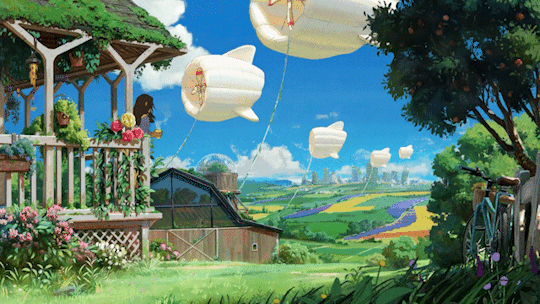
Today I want to talk about one Solarpunk-thingie, that kinda annoys me - and has to do with a lot with how real-life politians deal with talking about technology and especially energy technologies.
And this is the following fact:
We already have the technology! This is not some SciFi shit!
See, the issue within the politics tends to be, that a lot of folks go: "Oh, yeah, we would LOVE to go renewable. But right it is not possible! Once the technology gets there, we will totally go 100% renewable!"
And basically a lot of Solarpunks online are also waiting for the technology to get there. Again, there is sadly a big group of folks who technically love the aesthetics of Solarpunk and also generally the idea of a Solarpunk future, but do not engage with it over it. And they usually will also wait for technology to get there.
But it already is.
Let me talk about it.
We can produce enough renewable energy
In a way I get it. If you are not working in any fields related to this - and do not follow science news - you might just not know how fast the renewable energy field is moving right now. 10 years ago, yes, a lot of countries would have been able to go 100% renewable, but not all. It depended basically on the climate and environment. Partly because the photovoltaic (what most people call solar, but us engineers use solar for something a bit different) cells were just not as efficient in certain climates. And while the mix of wind and hydro power could do A LOT for many countries, it could not for all.
However, that was mainly before China really pulled all the stops for their research. No, it is not only China, but holy shit, China's research in terms of photovoltaic is insane. If you follow this, you basically will see a new breakthrough - often from China - every couple months. And by now, the efficiency of photovoltaic is insane. Sure, it might not make sense as the only source of energy in places were you basically do not get any sunlight for half the year, but outside of that? It is so darn good.
Other than that, we are really darn good with wind energy (which to my opinion is still the best way of producing energy) and hydro energy.
Don't get me wrong: We can totally improve those things further and further. But we can absolutely power the world on renewables right now. We do not need fossile fuels right now!
We can build climate-friendly transport!
I will remind y'all once more: Electric cars are definitely better than gas powered cars, for those people and situations in which cars are needed. (Read: For emergency services, certain forms of service work who need to transport stuff outside of the rail network, and probably also some people who live very isolated for certain reasons.) However, they are still cars and suck for this reason, if you do not REALLY need them.
Still, we are fucking good by now in building electric cars and for those scenarios where they are needed. Heck, by now in my city pretty much all public transport runs electric, including the busses. And no, they are not tram busses.
And yeah, turns out, we figured out how to build railways more than 200 years ago, and we figured out how to electricize them in 1881. Yes. 1881. 18 in the front. Almost 150 years ago. Sure, back then we were not that good with it, but we managed to build one for intracity transport that worked - and worked for long.
Yes, admittedly, there are some forms of transport that right now we might indeed need fossil fuels for. Right now, we have no method to fly planes and helicopters in a way that is both mass-producable and renewable. And the same is with transcontinental transport via the ocean.
Yeah, sure. We can technically just go fully low tech and just sail. That works. Heck, while it is about half as quick as modern ways to transport over the ocean, it is feasible. However, we just cannot move the amounts of cargo we might need to move with sailing. There are people figuring this out (partly through creating much better sails that work for MUCH BIGGER ships) but yeah, we are not there yet.
Still, a) a lot of the intercontinental stuff we technically do not need to transport (most of it is using cheap quasi-slave labor to save money), and b) that should not stop us from just doing sustainable on-land transport which we can do.
We also know how to build a better society
Now, a lot of the folks going for the Solarpunk aesthetics rather than philosophy are quite often very mistrustful of both anarchism and communism - or heck, just socialism. They often have drunken the capitalist cool-aid of capitalism being the "only system that works". But here is the thing: It doesn't.
Sure, there are versions of capitalism that would work a whole lot better than the Chicago-flavored one, but it will never really work - especially in regards to saving the environment. I talked about that a lot before.
But here is the thing. We know how it works better. We know how to build a better society. We know how to make economics work better. We know how to make better schools. We know how to build better cities. We know how to prevent at least a lot of wars. We know how to make society safer for kids. We know how to make healthier families. We know how to make medicine as a system work better. We know it all.
Heck, we have known how to make schools that are better in every way since the early 20th century - so more than a hundred years. This proposed school system since has been proofen time and time again in studies to be better for kids, and better in terms of education. But do we use them? No.
Again, politicians love to go: "We would love to change things, but we do not have a better system." But it is not true. We know how to do it better.
Same with the police and prison and stuff. We know how to do it better.
But right now, a) a lot of the stuff works in the favor of those who hold most power (aka the billionaires), b) a lot of people just do not like the idea of changing stuff majorly (which makes politicians who want change unpopular), and c) politicians also would need to fund the change - and that is going to be hard.
So, yeah. Change would be hard.
But it is not because we do not know how to do better.
And I really just wish people would stop propagating this idea that we do not know better. We do. But folks right now profit from things staying the same. And it sucks.
#solarpunk#punk#environmentalism#renewable energy#sustainability#sustainable energy#anarchism#anarcho communism#lunarpunk#sustainable transport
263 notes
·
View notes
Text

#structural engineering solutions#ratio structural#heavy lift design services#marine temporary works#building design services washington dc#ratio structural washington state#engeenirng#technology#design#structure#Method Engineering Services
0 notes
Text
Best News of Last Week - December 11
1. Biden administration to forgive $4.8 billion in student loan debt for 80,300 borrowers

The Biden administration announced on Wednesday that it would forgive an additional $4.8 billion in student loan debt, for 80,300 borrowers.
The relief is a result of the U.S. Department of Education’s fixes to its income-driven repayment plans and Public Service Loan Forgiveness program.
2. Detroit on pace to have lowest homicide rate in 60 years this year
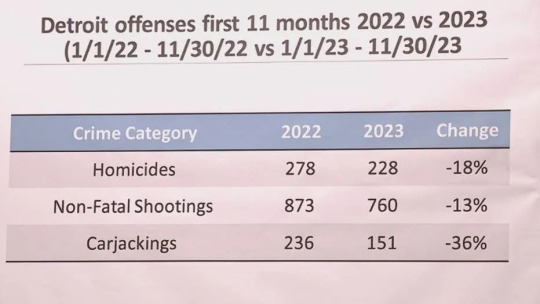
A partnership to reduce Detroit crime is being praised with the City on pace for the fewest homicides in 60 years.
"This is the day we’ve been waiting for, for a long time," said Mayor Mike Duggan. The coalition which includes city and county leaders that Detroit Police Chief James White formed in late 2021 to return the criminal justice system in Detroit and Wayne County to pre-Covid operations.
3. Dog that killed 8 coyotes to protect sheep running for Farm Dog of the Year
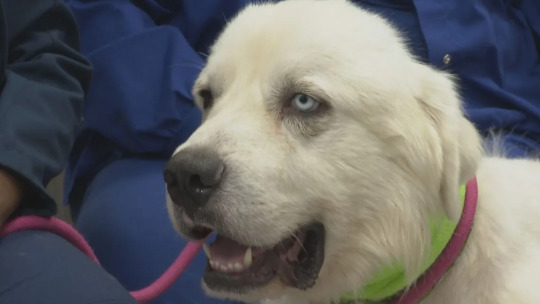
Over a year ago, Casper was stacked up against a pack of 11 coyotes, and he overcame them all to protect the livestock at his Decatur home. Now he needs your help.
Casper, the Great Pyrenees livestock guardian dog, needs the public to vote for him to become the American Farm Bureau's "Farm Dog of the Year: People's Choice Pup" contest.
4. Shimmering golden mole thought extinct photographed and filmed over 80 years after last sighting

De Winton's golden mole, last sighted in 1937, has been found alive swimming through sand dunes in South Africa after an extensive search for the elusive species.
5. About 40% of the world's power generation is now renewable

The International Renewable Energy Agency (IRENA) and World Meteorological Organization (WMO) have released their first joint report to strengthen understanding of renewable energy resources and their intricate relationship with climate variability and change.
In 2022 alone, 83% of new capacity was renewable, with solar and wind accounting for most additions. Today, some 40% of power generation globally is renewable, due to rapid deployment in the past decade, according to the report.
6. Jonathan the Tortoise: World’s oldest living land animal celebrates 191st birthday

The world’s oldest living land animal - a Seychelles giant tortoise named Jonathan - has just celebrated his 191st birthday. Jonathan’s estimated 1832 birth year predates the invention of the postal stamp, the telephone, and the photograph.
The iconic creature lived through the US civil war, most of the reign of Queen Victoria, the rise and fall of the Soviet Union, and two world wars.
7. New enzyme allows CRISPR technologies to accurately target almost all human genes

A team of engineers at Duke University have developed a method to broaden the reach of CRISPR technologies. While the original CRISPR system could only target 12.5% of the human genome, the new method expands access to nearly every gene to potentially target and treat a broader range of diseases through genome engineering.
---
That's it for this week :)
This newsletter will always be free. If you liked this post you can support me with a small kofi donation here:
Buy me a coffee ❤️
Also don’t forget to reblog this post with your friends.
907 notes
·
View notes
Text
Disclaimer that this is a post mostly motivated by frustration at a cultural trend, not at any individual people/posters. Vagueing to avoid it seeming like a callout but I know how Tumblr is so we'll see I guess. Putting it after a read-more because I think it's going to spiral out of control.
Recent discourse around obnoxious Linux shills chiming in on posts about how difficult it can be to pick up computer literacy these days has made me feel old and tired. I get that people just want computers to Work and they don't want to have to put any extra effort into getting it to Do The Thing, that's not unreasonable, I want the same!
(I also want obnoxious Linux shills to not chip in on my posts (unless I am posting because my Linux has exploded and I need help) so I sympathise with that angle too, 'just use Linux' is not the catch-all solution you think it is my friend.)
But I keep seeing this broad sense of learned helplessness around having to learn about what the computer is actually doing without having your hand held by a massive faceless corporation, and I just feel like it isn't a healthy relationship to have with your tech.
The industry is getting worse and worse in their lack of respect to the consumer every quarter. Microsoft is comfortable pivoting their entire business to push AI on every part of their infrastructure and in every service, in part because their customers aren't going anywhere and won't push back in the numbers that might make a difference. Windows 11 has hidden even more functionality behind layers of streamlining and obfuscation and integrated even more spyware and telemetry that won't tell you shit about what it's doing and that you can't turn off without violating the EULA. They're going to keep pursuing this kind of shit in more and more obvious ways because that's all they can do in the quest for endless year on year growth.
Unfortunately, switching to Linux will force you to learn how to use it. That sucks when it's being pushed as an immediate solution to a specific problem you're having! Not going to deny that. FOSS folks need to realise that 'just pivot your entire day to day workflow to a new suite of tools designed by hobby engineers with really specific chips on their shoulders' does not work as a method of evangelism. But if you approach it more like learning to understand and control your tech, I think maybe it could be a bit more palatable? It's more like a set of techniques and strategies than learning a specific workflow. Once you pick up the basic patterns, you can apply them to the novel problems that inevitably crop up. It's still painful, particularly if you're messing around with audio or graphics drivers, but importantly, you are always the one in control. You might not know how to drive, and the engine might be on fire, but you're not locked in a burning Tesla.
Now that I write this it sounds more like a set of coping mechanisms, but to be honest I do not have a healthy relationship with xorg.conf and probably should seek therapy.
It's a bit of a stretch but I almost feel like a bit of friction with tech is necessary to develop a good relationship with it? Growing up on MS-DOS and earlier versions of Windows has given me a healthy suspicion of any time my computer does something without me telling it to, and if I can't then see what it did, something's very off. If I can't get at the setting and properties panel for something, my immediate inclination is to uninstall it and do without.
And like yeah as a final note, I too find it frustrating when Linux decides to shit itself and the latest relevant thread I can find on the matter is from 2006 and every participant has been Raptured since, but at least threads exist. At least they're not Microsoft Community hellscapes where every second response is a sales rep telling them to open a support ticket. At least there's some transparency and openness around how the operating system is made and how it works. At least you have alternatives if one doesn't do the job for you.
This is long and meandering and probably misses the point of the discourse I'm dragging but I felt obligated to make it. Ubuntu Noble Numbat is pretty good and I haven't had any issues with it out of the box (compared to EndeavourOS becoming a hellscape whenever I wanted my computer to make a sound or render a graphic) so I recommend it. Yay FOSS.

219 notes
·
View notes
Text
It feels like no one should have to say this, and yet we are in a situation where it needs to be said, very loudly and clearly, before it’s too late to do anything about it: The United States is not a startup. If you run it like one, it will break.
The onslaught of news about Elon Musk’s takeover of the federal government’s core institutions is altogether too much—in volume, in magnitude, in the sheer chaotic absurdity of a 19-year-old who goes by “Big Balls” helping the world’s richest man consolidate power. There’s an easy way to process it, though.
Donald Trump may be the president of the United States, but Musk has made himself its CEO.
This is bad on its face. Musk was not elected to any office, has billions of dollars of government contracts, and has radicalized others and himself by elevating conspiratorial X accounts with handles like @redpillsigma420. His allies control the US government’s human resources and information technology departments, and he has deployed a strike force of eager former interns to poke and prod at the data and code bases that are effectively the gears of democracy. None of this should be happening.
It is, though. And while this takeover is unprecedented for the government, it’s standard operating procedure for Musk. It maps almost too neatly to his acquisition of Twitter in 2022: Get rid of most of the workforce. Install loyalists. Rip up safeguards. Remake in your own image.
This is the way of the startup. You’re scrappy, you’re unconventional, you’re iterating. This is the world that Musk’s lieutenants come from, and the one they are imposing on the Office of Personnel Management and the General Services Administration.
What do they want? A lot.
There’s AI, of course. They all want AI. They want it especially at the GSA, where a Tesla engineer runs a key government IT department and thinks AI coding agents are just what bureaucracy needs. Never mind that large language models can be effective but are inherently, definitionally unreliable, or that AI agents—essentially chatbots that can perform certain tasks for you—are especially unproven. Never mind that AI works not just by outputting information but by ingesting it, turning whatever enters its maw into training data for the next frontier model. Never mind that, wouldn’t you know it, Elon Musk happens to own an AI company himself. Go figure.
Speaking of data: They want that, too. DOGE agents are installed at or have visited the Treasury Department, the National Oceanic and Atmospheric Administration, the Small Business Administration, the Centers for Disease Control and Prevention, the Centers for Medicare and Medicaid Services, the Department of Education, the Department of Health and Human Services, the Department of Labor. Probably more. They’ve demanded data, sensitive data, payments data, and in many cases they’ve gotten it—the pursuit of data as an end unto itself but also data that could easily be used as a competitive edge, as a weapon, if you care to wield it.
And savings. They want savings. Specifically they want to subject the federal government to zero-based budgeting, a popular financial planning method in Silicon Valley in which every expenditure needs to be justified from scratch. One way to do that is to offer legally dubious buyouts to almost all federal employees, who collectively make up a low-single-digit percentage of the budget. Another, apparently, is to dismantle USAID just because you can. (If you’re wondering how that’s legal, many, many experts will tell you that it’s not.) The fact that the spending to support these people and programs has been both justified and mandated by Congress is treated as inconvenience, or maybe not even that.
Those are just the goals we know about. They have, by now, so many tentacles in so many agencies that anything is possible. The only certainty is that it’s happening in secret.
Musk’s fans, and many of Trump’s, have cheered all of this. Surely billionaires must know what they’re doing; they’re billionaires, after all. Fresh-faced engineer whiz kids are just what this country needs, not the stodgy, analog thinking of the past. It’s time to nextify the Constitution. Sure, why not, give Big Balls a memecoin while you’re at it.
The thing about most software startups, though, is that they fail. They take big risks and they don’t pay off and they leave the carcass of that failure behind and start cranking out a new pitch deck. This is the process that DOGE is imposing on the United States.
No one would argue that federal bureaucracy is perfect, or especially efficient. Of course it can be improved. Of course it should be. But there is a reason that change comes slowly, methodically, through processes that involve elected officials and civil servants and care and consideration. The stakes are too high, and the cost of failure is total and irrevocable.
Musk will reinvent the US government in the way that the hyperloop reinvented trains, that the Boring company reinvented subways, that Juicero reinvented squeezing. Which is to say he will reinvent nothing at all, fix no problems, offer no solutions beyond those that further consolidate his own power and wealth. He will strip democracy down to the studs and rebuild it in the fractious image of his own companies. He will move fast. He will break things.
103 notes
·
View notes
Text
Inside the Yeager Empire : Power, Scandal, and Legacy
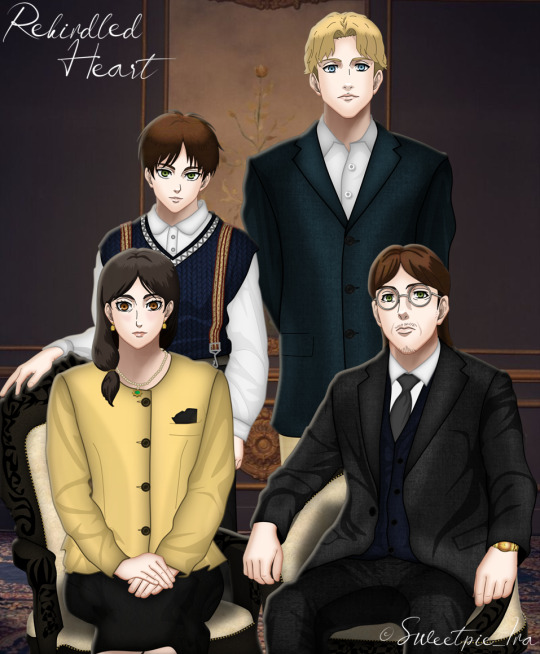
Art by @sweetpie-ina
The Yeagers are no ordinary family. With roots planted deep in both aristocracy and ambition, the House of Yeager has long been a prominent name in Paradis society. Behind the name is a tangled web of brilliance, controversy, and a generational divide that continues to both fascinate and unsettle the public.
At the helm of the family is Dr. Grisha Yeager, a towering figure in the world of medicine and public service. Formerly a renowned university professor, Grisha now serves as the Minister of Health while also overseeing an expansive medical empire that includes the Yeager Medical Instruments Company, a prestigious private university for medical sciences, and the state-of-the-art Yeager Memorial Hospital.
Grisha's personal life has been just as eventful as his professional career. His first marriage to Dina Fritz, a woman of old money and noble lineage, created headlines not only for the union of intellect and royalty but also for its eventual unraveling. Together, they had one child—Zeke Yeager.
Zeke Yeager, the eldest son, inherited his father's intellect and his mother's quiet poise. A gifted physician and avid reader, Zeke is the golden boy of the Yeager lineage. He’s often seen as the epitome of responsibility—polished, eloquent, and disciplined. Despite a somewhat distant relationship with his father, Zeke has maintained a respectable public image. His hobby, baseball, is both a leisure and a symbol of his methodical, calculated nature.
After divorcing Dina, Grisha married Carla—a woman once employed as a household servant. Her transformation from commoner to aristocrat made waves across elite social circles. Her kindness and grace won over many, but whispers of envy and derision followed her for years. Nevertheless, Carla Yeager has come to define elegance on her own terms, leading charity galas, arts foundations, and women’s health initiatives. She remains a favorite among the press and socialites alike.
The second son of Grisha, and only child of Carla, Eren Yeager is the family's most polarizing figure. Brilliant yet rebellious, Eren was the talk of the town in his teenage years—not for his academic prowess (which he had in spades), but for his penchant for mischief. He was infamously labeled the "failed experiment" of the Yeager Empire after rumors of underground street racing, school suspensions, and even an alleged shooting incident that left a friend in a coma.
But Eren's story didn’t end there, Now approaching his 30s, Eren has evolved into a mechanical savant. His unparalleled skills in engineering, particularly in aviation mechanics, have made him indispensable in the aeronautical field. He has launched his own tech firm and collaborates with international defense and aerospace industries, proving that genius comes in many forms—even those dismissed too soon.
Despite their accomplishments, the Yeagers are no strangers to scandal. The whispered tales of favoritism between siblings, Carla's past as a servant, and the turbulent rivalry between Eren and Zeke have kept tabloids busy for years. Perhaps the most shocking was the alleged shooting incident during Eren’s youth, a claim that was quickly buried yet never forgotten. Some insiders speculate that the scandal was silenced to preserve the family's reputation.
Yet what fascinates the public most is the question of legacy. Who will inherit the Yeager name—not just its wealth, but its influence? Will it be Zeke, the picture of control and intelligence? Or Eren, the once-rebellious son who forged his own empire? the Yeager sons chart separate paths in drastically different worlds, one thing remains clear: the Yeager Empire is more than a family—it is an institution, for better or worse.
Stay tuned. The saga is far from over.
---
#little chick au#eremika rekindled heart au#eremika au#attack on titan#eremika#eren jaeger#mikasa ackerman#eren jaeger au#eren x mikasa#eren yeager#eren yeager au#eren au#attack on titan au#aot#aot au#snk#shingeki no kyojin#grisha jaeger#grisha yeager#carla jaegar#carla yeager#zeke yeager#zeke jaeger#shingeki no kyoujin#fanart#artists on tumblr#art
56 notes
·
View notes
Text
Confession - priest!Miguel O’Hara x Reader [part 2]

Word count: 2,270 (oops)
Rating: mature for suggestive content. Mentions of masturbation. You have a dirty mind… tsk tsk. Religious content. Mentions of parental death (sorry for not tagging last time).
A/N: Thank you for your feral support in reading part 1! The art above is again by @Ejpuki on twt. They drew this moment from part one and JUST LOOK AT IT! They also did a pre-reading which I greatly appreciated. Go support them over there <3 I only tagged the people who explicitly stated bc I don’t want to overstep. Also, I guess I should watch Fleabag? Enjoy! part three is cookin’ in my noggin’
// Psalms 32:3-4
When I kept silent, my bones wasted away through my groaning all day long. For day and night your hand was heavy on me;
Rumbling sounds drone from the engine in a constant hum as the bus wheels roll down the asphalt, occasionally shuffling the passengers inside. Yourself included.
The wheels in your mind are conjuring images of too much skin, friction, and want. The mental pictures… different positions and other things that you’ve only read about - all featuring the same tall deacon from your small church.
You curse yourself for both your overactive imagination and forgetfulness for having left your headphones at home. Some loud music would drown out the whir of the bus and push out the flashes of lewdness that plagued you.
Reverend O’Hara, you learned that’s what transitional deacons are usually called after inquiring about the proper title on Google the second you got home from that communion, occupied the majority of your mind. He took up residence in your thoughts without even asking permission and you didn’t know the proper way to absolve your sanity of him. It had only been two weeks since you’d met him, two Sunday services, but you were hooked. This trip into the city was supposed to get you out of the house and help clear your mind of its recent inhabitant.
The methods you were currently using were certainly of no help. Nearly every night, for the past two weeks, you’d given into temptation. Allowing the streaking images of what you could only envision his toned body looked like to remain longer in your mind’s eye. His thumb on your lip, the quick swipe across - became more inquisitive of the inside of your mouth in your imagination. You pressed into yourself and thought of those long, thick fingers. You carried yourself away on highs with only his hands in mind. You yearned to baptize him in your waters.
You buried fingernails into your palms to ground yourself as the scenery outside the bus began the change drastically, pulling you out of your daydream.
Your hometown along the Catskill Mountains was enveloped by the natural world - tucked into valleys of the vast countryside. In the three weeks you’d been back home, you had already gotten used to surrounding greenery. You’d forgotten the toll that city expansion was having on the rows of vegetable and orchard farms in the surrounding areas.
Your gaze out the window watched tree lines and grassy hills give way to glimmers of futuristic architecture as the bus entered Nueva York. The rhythm of wheels on tarmac became a backdrop to the din of honking horns, shouting pedestrians, and blaring sirens. You had only recently left a city not too different from this one, but the drastic change in landscape from the mountains made your head spin. The inertia of the bus braking and accelerating over and over on the intersecting streets only added to the motion sickness. You recognize the next stop as the usual one you and your mother used when coming into the city. You quickly get off the bus, blessing the steady ground underneath as your boots hit the pavement.
Towering structures of carbon fiber and glass dominated the skyline, some illuminated by bright neon light displays, others blending into the afternoon sunshine. Advertisements for fast foods, fast money, and fast cars flickered on screens everywhere. You look to where the bus carried you from and, in contrast, the countryside stretched out, calling you back. Despite the slight familiarity in the maze of metal, the sudden change in surroundings made you slightly anxious.
The steady stream of citizens didn’t help your nerves either. You take a moment to get yourself together before following the foot traffic flow up a familiar street.
Your eyes recognize a food spot from a bygone era and you can’t help but smile. You picked up the pace as you headed to the establishment your family used to frequent. Timeless Treats is still here?! You pull on the long handled door and a wave of music, chatter, and sugar hit you at once. Much more pleasant than the waves of anxiety from moments before.
Entering the quaint eatery, you’re transported into a cozy atmosphere reminiscent of an old fashioned diner. A cheerful man at the front waves you in and shouts for you to ‘sit where ya want!’.
You recognized the vintage decor: rusted signs with cartoon mascots and ads for ice cream floats that cost only $2. Imagine! You select one of the smaller retro tables with two stools and hear a jukebox play a song you don’t recognize but tap your foot along to.
There was more to this diner than what it seems at first glance. A few more glances noticed the subtle touches where the diner had embraced the future where it mattered, with high-tech kitchen appliances that helped the staff immensely. A holographic menu pops up across the portion of the table you're sitting at and you slide your finger along the options.
This bakery specialized in delicious treats with a futuristic flare, with many favorites being popular since the establishment opened generations ago. Your eyes fell onto the pastry menu and your curiosity piqued as you ordered the ‘Time Traveler’s Torta.’
All the hustle of the city had occupied your mind until you were sitting alone at the table. Your eyes scanned the other occupants and you wondered what they were all talking about with their sugary sweets. It made you think of him again.
Dammit. A whole ten minutes without thinking of Reverend O’Hara, that’s a record! You couldn’t help the images of Miguel that fluttered now. Only this time you pictured him sitting at the table with you. The two of you share a dessert and you smile at the thought. You visualize his thumb coming to your face to wipe whipped cream from your lips only to plop the finger into his own mouth. That moment as mass replayed in your mind with differing flavors of spice on repeat.
The torta arrives and you gawk at the presentation of the treat. A classic cake with layers of light vanilla sponge, intricately placed swirls of sweet cream cheese frosting, and decadent chocolate sauce. This sweet was the perfect balance of timeless and futuristic as it sat on an oblong, ornate plate.
You savored the flavors as you ate and continued to imagine a date with the deacon. You ask yourself if deacons can even date and the thought pulls you out of your delusions for a moment. Get it together…
As you scooped the last bits of the pastry into your mouth, you pondered your dilemma. Mom always said that confession cleared a clouded consciousness, but there was no way you’d divulge this information to her. Her hypothetical reaction to your crush on a clergy member makes you shiver.
An idea comes to mind that makes you think to yourself that you’ve really gone mad.
The madness pushes you from your seat after paying for the dessert. There’s a slim chance what you’re looking for is actually there considering the cities expansions. That doubt doesn’t stop you from following a semi-recognizable path down the busy streets.
Every tall figure you pass makes you do a double take. The idea of the deacon brushing alongside you making you smile. You turn a corner as your imagination creates sweet scenarios with Reverend O’Hara and stop in your tracks. You cause people behind you to push into your back and spit harsh murmurs at you.
It was still there.
You were surprised for good reason. You were headed towards a relic of past times, nestled between buildings of glass and metal. There was some scaffolding supporting it as the building you headed towards was centuries old. Other than that - the structure you now stood and stared at jutted towards the sky in the old brick and mortar style you were used to seeing in your hometown.
But the Cathedral of Nueva York wasn’t like the humble church in your hometown. The ornate bell tower and large cross atop the chapel in front of you proved that. The only thing to change about the building was the name as the state itself saw many changes a few decades ago - including the name of the actual city.
You find yourself reminiscing on the few times you’d been to the church as you walked inside. Your family used to attend the fancy Easter services and Christmas plays. Those trips stopped after your father passed, and your mother rarely came to the city at all anymore. You remember seeing pictures of them on their wedding day at this very church. Priesthood is a tight knit group and Father Steen knew the head priest, who extended their church for their wedding services.
Given it was a weekday afternoon, there weren’t many souls inside. Despite the numerous options for seating, you sat in your usual middle pew, aisle seat.
You eyed the part of the church that had brought you here in the first place. The confession booth. Its cherrywood exterior made you think of those eyes that bore into yours that day of communion. You shake your head but the visual remains.
The church in your hometown didn’t have a confessional booth. Even if they did - why the hell would you confess there? To the subject of your lustful desires? So many questions and doubts enter your mind.
Could you really do this? Confess to a priest that you pined over a man in his chaste brotherhood? Think of the judgment!
Another thought occurs to you: their whole shtick was that only one entity could do the judging. And it was confidential. If you received some good ol’ fashioned Catholic scolding and Hail Mary’s, maybe that would be enough to get you back to your senses. Reverend O’Hara is a man devoted to God and cannot be hindered by the whims of a degenerate like yourself.
Emboldened by the potential to relieve yourself of your corrupt thoughts, you stand and approach the far right front of the church. The confessional is smaller than it looked from how you remember as a child and teen but it doesn’t stop you from nearly yanking the door open. You don’t even knock.
Thankfully no one is on the confessing side as you burst into the tiny box. The confined space became even smaller as you closed the door behind you quickly. Your mind races towards impure thoughts of the deacon pressed against you in the tight booth space. His height would force him to bend slightly over you and the visual almost knocks you onto the bench which would probably be right at crotch level…
You remember the times you’d done this before and cry out the usual, “Forgive me, for I have sinned and it has been many years since my last confession…”. Who were you even asking for forgiveness? You think for a moment about the last time you were in this booth. You felt so guilty about stealing from the general store all those years back. This was a different kind of confession. This would hopefully absolve yourself of the sinful attraction to the forbidden.
You start light, fumbling over the words, “I’ve gotten drunk and high, uh, a good bit while in college. I lied to my mother and got into major trouble as a result. I’ve been selfish and lazy.”
The anonymity and the release of it all lit a fire under you and you kept going.
“While I’m in this confession booth, and I know it is a sacred and holy place”, you sigh and hear shuffling on the opposite side of the wall, the priest waiting patiently on the other side. “I’ve been struggling with my faith and don’t believe in god…”
You hear the clergyman start to interject but the voice that comes out of you has a fierce tone.
“I’m not done.” Now it was the priest’s turn to sigh and you see movement through the small slits in the partition, but hear nothing else. You continue. The most scandalous part to admit had yet to be said.
“Father, I’ve been lustful over the deacon at my church.” There’s silence on the other end and before embarrassment can take over you continue, “I’m constantly thinking of him and having impure thoughts that drive me to-“ oh god, here it is
“Touch myself. Daily. With this deacon on my mind.” You can’t stop the heat from painting your cheeks a deep red.
“I feel guilty because he isn’t for me to think that way about. From just the two times I’ve seen him, I know he is a good man who does good things. He’s on a path towards righteousness. He’s worthy.” To your shock, you feel tears form and they begin to fall.
“I’m a sinful nonbeliever. Definitely not someone he could be with, unworthy of devotion of any kind. And I’m not good.” Your breathing becomes shaky as the tears fall harder. Despite the fact that you feel your words are the truth, you can’t help but imagine him there now. Comforting you as you cry.
Now that you’ve finished confession, you expect to hear an outburst of disapproval or at least ‘50 Hail Mary’s’ to absolve you of your confessed transgressions.
But that’s not what you heard next.
You hear your name. You hear your name in that sweet music that’s been ringing in your ears the last week or so. This time the musical tone is cautious. Your mouth hangs open in disbelief as your eyes glue to the wall where the music came from.
To confirm your suspicions, you grab the knob on the partition and yank it back.
Through the small window you see a familiar pair of eyes analyzing your face, heavy with worry.
Reverend O’Hara had just taken your confession…
I pray you liked this, dear reader.
Tagged ppl - @friendlynbhdzero @ceoofghosts it won’t let me tag you @hoelychildofgod
#miguel o'hara#fanfic#miguel x reader#priest!miguel#priest au#au fic#across the spiderverse#miguel x you
1K notes
·
View notes